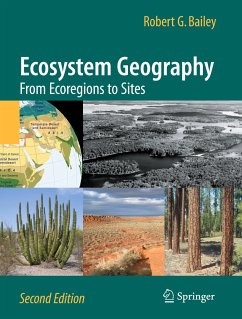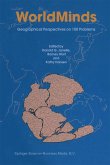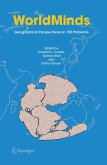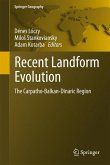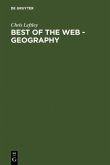and management is presently undergoing enormous change: away L from managing single resources to managing ecosystems. From f- est to tundra, to desert, to steppe, the world's ecosystems vary vastly. To manage them effectively we need to understand their geographic d- tribution better. We need to do this at various levels of detail because ecosystems exist at multiple scales in a hierarchy, from regional to local. Maps are needed to display ecosystem distribution and hierarchy. Until now, information on de?ning ecosystem boundaries has been scarce. This book is the ?rst to clarify and systematize the underlying principles for their mapping. It presents a synthesis of the knowledge in this ?eld and provides a guide to its use. I recommend this book to all who are involved in the study and m- agement of ecosystems. Chief, USDA Forest Service Jack Ward Thomas v Preface to the Second Edition his book outlines a system that organizes the Earth into a hierarchy T of increasingly ?ner-scale ecosystems that can serve as a consistent framework for ecological analysis and management. The system consists of a three-level hierarchy of nested ecosystem units and their associated mapping criteria. Delineation of units involves identifying the envir- mental factors controlling the spatial geography of ecosystems at va- ous levels and establishing boundaries where these factors change s- ni?cantly. Macroscale units (ecoregions) are climatically controlled and delineated as Köppen-Trewartha climate zones.
From the reviews:
"An important book, richly illustrated with clear diagrams, maps, and photos. A major contribution to ecosystem ecology and an essential acquisition." (Choice)
"the first [book] to synthesize the available knowledge for ecosystem classification and mapping and to provide a general guide to its use-Foresters will find Ecosystem Geography a carefully compiled benchmark reference with an exhaustive bibliography on the state-of-the-art of ecosystem classification and its bearing on resource management." (Journal of Forestry)
"I would recommend this book to those with serious interest in physical geography-a good resource for those who teach physical geography." (Journal of Geography)
"The new 'ecosystem management' demands an understanding of ecosystems and the relationships between them. In short, it requires a sound geographical knowledge of ecosystems. Ecosystem Geography lays a firm foundation for such knowledge." (Progress in Physical Geography)
"The book is essential reading for ecologists and natural area managers interested in ecosystem management and understanding how their landscapes fit into the larger picture regionally, continentally, and globally." (Natural Areas Journal)
From the reviews of the second edition:
"In this second edition, Bailey ... clarifies original concepts, explains how boundaries of ecological units at the three scales can be mapped, contrasts genetic and empirical approaches to ecosystem classification, and discusses how climate change over time and human modifications influence ecosystem distribution and processes. ... The volume's excellent illustrations include maps, redrawn two-color diagrams, and photos. Summing Up: Essential. Upper-division undergraduate through professional ecology and resource management collections." (R. L. Smith, Choice, Vol. 47 (11), July, 2010)
"An important book, richly illustrated with clear diagrams, maps, and photos. A major contribution to ecosystem ecology and an essential acquisition." (Choice)
"the first [book] to synthesize the available knowledge for ecosystem classification and mapping and to provide a general guide to its use-Foresters will find Ecosystem Geography a carefully compiled benchmark reference with an exhaustive bibliography on the state-of-the-art of ecosystem classification and its bearing on resource management." (Journal of Forestry)
"I would recommend this book to those with serious interest in physical geography-a good resource for those who teach physical geography." (Journal of Geography)
"The new 'ecosystem management' demands an understanding of ecosystems and the relationships between them. In short, it requires a sound geographical knowledge of ecosystems. Ecosystem Geography lays a firm foundation for such knowledge." (Progress in Physical Geography)
"The book is essential reading for ecologists and natural area managers interested in ecosystem management and understanding how their landscapes fit into the larger picture regionally, continentally, and globally." (Natural Areas Journal)
From the reviews of the second edition:
"In this second edition, Bailey ... clarifies original concepts, explains how boundaries of ecological units at the three scales can be mapped, contrasts genetic and empirical approaches to ecosystem classification, and discusses how climate change over time and human modifications influence ecosystem distribution and processes. ... The volume's excellent illustrations include maps, redrawn two-color diagrams, and photos. Summing Up: Essential. Upper-division undergraduate through professional ecology and resource management collections." (R. L. Smith, Choice, Vol. 47 (11), July, 2010)

